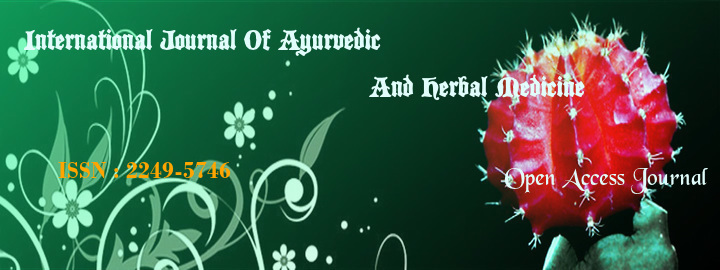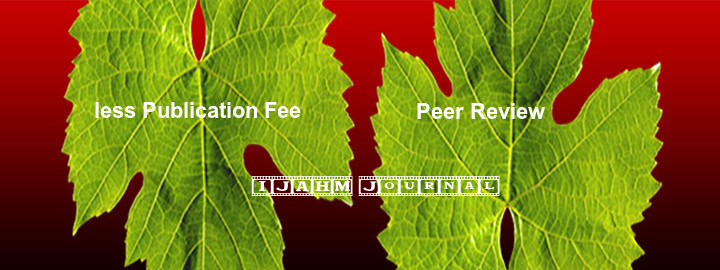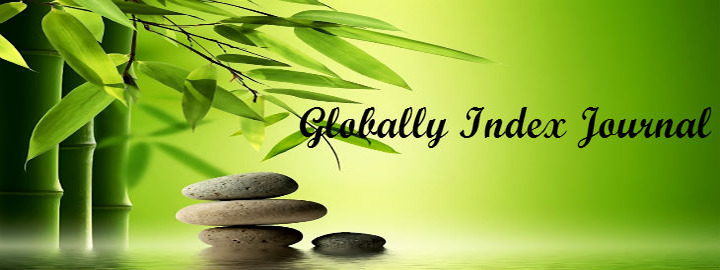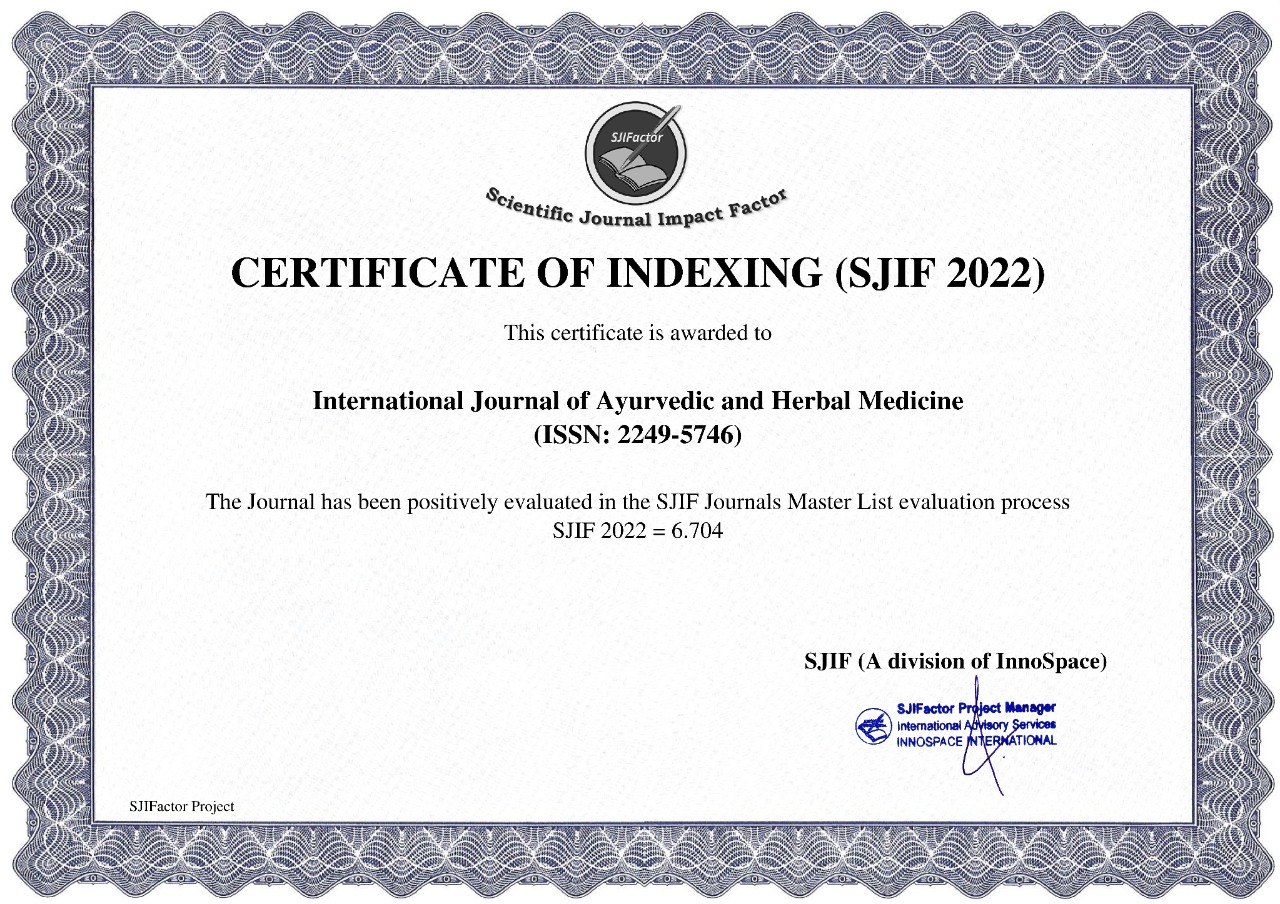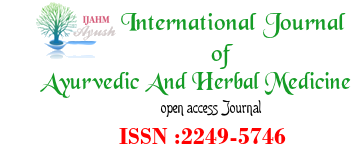


*Iroka F. C.1, Chukwuma O. M.2, Adimonyemma N. R.2, Akachukwu E Esther3
1Department of Botany, Nnamdi Azikiwe University, P. M. B 5025 Awka, Anambra State nigeria.
2Department of Biology, Nwafor Orizu College of Education, Nsugbe, Anambra State Nigeria.
3(department of Biology, Nwafor Orizu College of Education, Nsugbe Anambra State)
Corresponding Author: Iroka, Finian Chisom (This email address is being protected from spambots. You need JavaScript enabled to view it.)
Abstract
Plants have formed the basis of sophisticated traditional medicine practices that have been used for thousands of years by people in many countries. The term ‘medicinal’ as applied to a plant indicates that it contains a substance or substances which modulate beneficially the physiology of sick mammals and that it has been used by man for that purpose. The knowledge and use of herbal medicines are also associated with supernatural powers and hence some of the preparations and treatments are followed by rituals and chanting of incantations. Basically, the traditional medicines fall under three categories; those common remedies which are not followed by any rituals, those which are considered to be family secrets handed down from one generation to the other and then those medicines known to the professional herbalists who go through strict and rigorous practice while paying heavily for the acquired knowledge. Although some herbs may have medicinal values, sometimes the medicinal preparations inflict side effects. However, the present knowledge on medicinal uses of plants needs scientific investigation to confirm their medicinal value. It is incontrovertible that traditional African medicine exhibits far more merits than demerits and its values can be exploited provided the Africans themselves can approach it with an open mind and scientific mentality. No doubt the traditional healers diagnosing and managing various common diseases at primary health care level, with various herbal dosage forms which may include; concoctions, decoctions, infusions, dried prodder, ointments, tinctures and macerates are much closer to the community than the orthodox doctors who are mainly found in urban health care locations. But the major challenge is that scientifically based evidence on traditional medicine, quality standards and regulations are not being developed at the same pace as the demand for the medicines. Therefore, member states of WHO African region need to scale up institutionalization of African traditional medicine in their health system. Institutionalizing African traditional medicine in health system is a key pillar in the promotion of traditional medicine in this 21st century.
REFERANCES
1. WHO (1978a). Alma Ata Declaration. Primary Health Care. Health of All Series No.1.
2. Hutchinson, J and Dalziel, J.M. (1954). Flora of West Tropical Africa, Vol. 1, 11 and 111.
3. Keay, R.W.J., Onochie, C.F.A. and Stanfield, D.P. (1964). Nigerian Trees. Vol. 1 and 2.
4. Glendhill, D. (1972). West African Trees, Longman Group Ltd., Nigeria. Pp 57-58, 117.
5. Farnsworth, N.R., Akerele, O., Bingel, A.S. (1985). Medical Plants in Therapy. Bull. World Health Organization. 63:965-981.
6. Akerele, O. (1991). Medical Plants: Policies and Priorities. In Akerele, O., Heywood, V., and Synge, H. (Eds) Conservation of Medical Plants. Cambridge University Press, Cambridge. Pp 200-250.
7. Fellows, L.E. (1991). Pharmaceuticals from Traditional Medical Plants and Others: Future Prospects. A Paper Presented at the Symposium ‘New Drugs from Natural Source’. Sponsored by I.B.C. Technical Services Ltd. London. June 13th-14th 1991. Royal Botanical Gardens, Kew.
8. Farnsworth, N.R. and Soejarto, D.D. (1991).Global Importance of Medical Plants. In: Akerele, O., Heywood, V. and Synge, H. (Eds)Conservation of Medical Plants. Cambridge University Press, Cambridge. Pp 200-250.
9. Oliver, B.E.P. (1960). Medicinal Plants. Journal of Nigerian Field Society. 24(2):54-71.
10. Irvine, F.R. (1966). West African Botany. 2nd Edition Oxford University Press, London. 80pp.
11. Holland, J.H. (1922). Useful Plants of Nigeria. Bulletin of Miscellaneous Information. IX:19-21.
12. Singh, M.P., Malla, S.B., Rajbhandari, S.B. and Manadkar, A. (1980). Medical Plants of Nepal. Eco. Bot. 33(2)185-193.
13. Jain, S.K. and Borthakur, S.K. (1980). Ethnobotany of Mukurs of India. Eco. Bot. 34(3):268.
14. Egunjobi, J.C. (1978). Uses of West African Plants. Ibadan Oxford University Press. Pp 22-30.
15. Shiv, D.L. and Kamlesh, (1980). Plants used by the Bhat Community for Regulating Fertility. Eco. Bot. 34(3): 273-275.
16. Kumar, S., Shrukla, Y.N., Lavania, U.C., Sharma, A and Singh, A.K. (1997). Medicinal and Aromatic Plants: Prospects for India. J. Med. Arom. Pl.Sci. 19(2)361-365.
17. Joy, P.P., Thomas, J., Mathew, S., Skaria, B.P. (1998). Medical Plants, Kerala Agricultural University, Aromatic and Medicinal Plant Research Station.
18. Parfitt, R.T. (1978). Drug Discovery, Design or Serendipity. An Inaugural Lecture Series. University of Bath U.K.
19. Baqar, S.R., (2001). Anti-Spasmoslic Action of Crude Methanolic Extract. Journal of Medical Plants Res.Vol. 6(3) 461-464.
20. WHO (1978b). The Promotion and Development of Traditional Medicine. Technical Report Series 622.
21. Sofowora, A. (1993b), Medicinal Plants and Traditional Medicine in Africa (2nd Edition). Spectrum Books Ibadan Nigeria. Pp20-140.
22. Baba, S., Akerele, O. and Kawguchi, Y. (1992) Natural Resources and Human Health (Eds). Elsevier Tokyo. Pp 50-180.
23. Maxwell, N.C. (1962). Witch Doctor’s Apprentice. Victor Gollancz (Ed.) London. 353pp.
24. Bruneton, J (1995). Pharmacognosy, Phytochemistry and Medical Plants. Intercepts Ltd England UK. Pp 110-115.
25. Akerele, O (1988). Medical Plants and Primary Health Care: An Agenda for Action Fitoterapia Lix (5): 356.
26. Enwonwu, C.O. (2003). Global Trends in the Use of Complimentary Medicine. Proceedings of the 2nd Dr. David Barmes’ Memorial Public Health Symposium, 25th March 2003, Organised by the Regional Center for Oral Health Research and Training for Africa, Jos in Collaboration with WHO Regional Office, Brazzaville.
27. Wallis, T.E. (1967). Textbook of Pharmacognosy 5th Edition J&A Churchill Ltd. London. Pp.355.
28. Sofowora, A. (1993a). Recend Trends in Research into African Medicinal Plants. J.Ethropharmacolo. 38:209-214.
29. Lewis, E and Lewis, E. (1977). Medical Botany. John Wiley & Sons. New York. 515pp.
30. Bailey, C. J. and Day, C. (1989). Traditional Plant Medicines as Treatment for Diabetes. Diabetes care, 12 American Diabetes Association. Pp 553-564.
index







